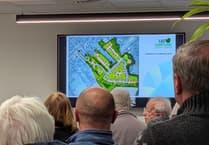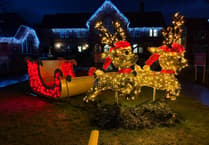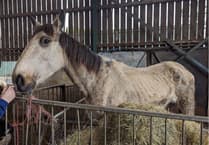The Society has now submitted its response to the consultation, by international brewing giant Molson Coors and East Hampshire District Council (EHDC) as it starts to formulate a masterplan for the redevelopment of the 12-acre town centre site, left vacant following the closure of the Manor Park brewery in Lower Turk Street.
Alton has a brewing history spanning more than 500 years, and since 1763 has seen the coming and going of a number of larger commercial breweries. Manor Park was built in 1963 to make Harp Lager, it was bought by Bass in 1979 and the brewing division of Bass was acquired by Coors in 2002, prior to the merger in 2005 with Molson, when the company name became Molson Coors.
In recent years, Molson Coors’ Alton brewery had been reliant on brewing Heineken, which made up around 75 per cent of the total Alton brewery production. In 2014, Heineken announced that it would not be renewing the contract and, as a result, Molson Coors embarked on a review of its UK brewery network resulting in the closure in May last year to end 52 years of brewing on the Manor Park site, and the loss of 108 jobs.
A public consultation into the redevelopment of the site was launched in December and closed last Friday, with preliminary proposals expected in April.
According to chairman Bob Booker, the Alton Society, which currently has around 260 members drawn from within the parishes of Alton and Beech, welcomed the decision by Molson Coors and EHDC to go to public consultation at this early stage, being well aware of the “sometimes conflicting and competing priorities that will ultimately determine the built form of the new development”.
Following an Alton Society meeting, the response has now been submitted by Nick Carey-Thomas, chairman of the built environment group, in which the Society agrees with EHDC’s preference for a mix of housing and employment and, “a most important consideration”, public and community uses.
On the issue of housing, Society members would welcome a mix of flats and houses, 40 per cent of them affordable. It is suggested that “fairly high densities could be achieved by building higher than the Alton norm” on certain parts of the site, the best suited being north of the river.
Employment opportunities, it is suggested, could be, in part, created in the leisure industry, with artisan workshops, including a micro-brewery and cafe/restaurants.
The Society warns that at present the market for retail and office accommodation is “not encouraging”.
On the subject of leisure, entertainment and community, the Alton Society believes this prestigious town centre site could provide an opportunity for a “multi-purpose performance space” which the town currently lacks, as well as a bowling alley, cinema and an indoor play space.
EHDC’s present office and tourist information point could possibly move from its current site on Turk Street, along with the Citizens Advice office, and the Society believes there should be a museum dedicated to the town’s rich brewing history.
It could also provide additional town centre car parking, in addition to parking associated with the use of the site.
In viewing the opportunities offered by the redundant brownfield site, the Alton Society believes it could “create a whole new quarter within Alton’s town centre, with its own identity”.
The River Wey, which runs through the site, is viewed as “a potential major asset” which could be bordered with landscaped public green space for its length, providing a walkway from the town centre to Kings Pond, passing through a tunnel under the railway embankment.
It is suggested that the main pedestrian access to the site should be where the river enters, opening up the culvert, to enable an easy and attractive connection between currently disjointed parts of the town.
The submission continues: “We would particularly welcome good contemporary design in all parts of the site, while being respectful to the contiguous parts of the town such as Kingsmead.
“Green space along the river could perhaps be treated as part of the open space requirement in connection with the housing.”
Alton Society members would like to see roof-top terraces, and balconies, for the flats, with terraced housing to form streets and squares to give a “properly urban feel”. In addition, there could be, the Alton Society suggests, “a mix of uses between ground and upper floors”, as occurs in central areas of the town.
The Society would like to see community and leisure facilities grouped around a public square to bring “a sense of place” to the site.
Believing that the project should be seen to “set the pace” in such matters, Alton Society members believe there is an opportunity also to incorporate “forward-thinking measures for low energy use” such as a biomass district heating scheme and photovoltaic devices incorporated into windows and roofs.
There are other key issues to be addressed, such as the need for a secondary vehicle access from the north to supplement the existing site entrance from Lower Turk Street. And increased pedestrian access and visual connection to the town, with direct access to Kings Pond via a tunnel through the railway embankment, is seen as a priority.
The Society suggests construction of an undercroft car park, in the part of the site that already sits below street level, Drayman’s Way and Lower Turk Street, which would require little excavation.
Finally, the Alton Society would see future management of the site put into the hands of a management company in which all future owners would have a share.




Comments
This article has no comments yet. Be the first to leave a comment.